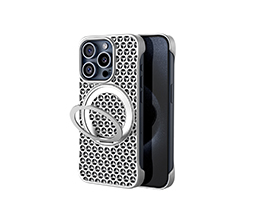
OEM/ODM PROCESSING ONE-STOP SERVICE
More than 20 years of focus on business of 3C digital accessories and
electronic products with R&D,design,manufacturing and sales in one
CONSULTATION HOTLINE:
0769-82252888

OEM/ODM PROCESSING ONE-STOP SERVICE
More than 20 years of focus on business of 3C digital accessories and
electronic products with R&D,design,manufacturing and sales in one
CONSULTATION HOTLINE:
0769-82252888
How to ensure the quality control of CNC precision machining?
Publish Date: 2024-10-10 00:00:00click:0
Ensuring the quality control of CNC precision machining is a multi-step process that involves strict management and monitoring of multiple links. Here are some key steps:
Quality control in the design phase:
Ensure that the design drawings are accurate and meet the processing requirements.
Simulation is carried out using CAD/CAM software to predict possible problems during machining.
Material selection:
Select suitable materials to ensure that they meet processing requirements and mechanical properties.
Check the size and surface quality of the material.
Machine accuracy:
Calibrate and maintain CNC machines regularly to ensure their accuracy and stability.
Use high-precision measuring tools, such as laser interferometers, to calibrate the machine.
Tool Management:
Select the right tool for the material and machining requirements.
Check tool wear regularly and replace it in time.
Programming and simulation:
Write accurate NC program to avoid machining errors.
Simulation software is used to verify the correctness of the numerical control program.

First piece inspection:
Before batch processing, the first part is processed and inspected to ensure that the processing quality meets the requirements.
Real-time monitoring:
Sensors and monitoring systems are used during machining to monitor machine status and machining quality in real time.
Personnel training:
Conduct regular training for personnel to ensure they understand the importance of quality control and related skills.
Process control:
Develop detailed procedures and checklists to ensure that each step is performed according to standards.
Quality:
Use precision measuring tools such as coordinate measuring machines and microscopes to regularly measure the size and geometric accuracy of the workpiece.
Statistical Process Control (SPC) :
Apply statistical methods to monitor and control the machining process, detect and correct deviations in time.
Feedback and continuous improvement:
Establish a feedback mechanism to collect data during the process for continuous improvement of the process.
Environmental control:
Ensure that the temperature and humidity of the processing environment are stable, as these factors may affect the performance of the material and the machine.
Cleaning and maintenance:
Clean machine tools and work areas regularly to prevent dust and debris from affecting machining quality.
Documentation:
Record all processing parameters and inspection results for easy traceability and analysis.